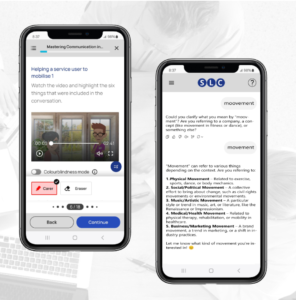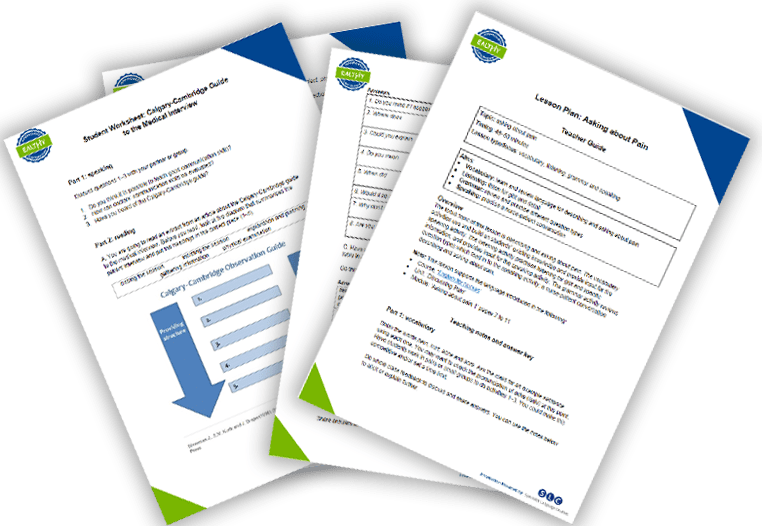
SLC win Ufi grant to develop AI language learning app for social carers
We’re delighted to have won a grant from Ufi VocTech Trust to develop an AI-driven technology solution that provides cheap phone-based language and communication skills

This lesson teaches the language used when describing the eye and pupil reactions. It includes communication, vocabulary and reading activities.
B2-C1 level
● Topic: the eye and pupil reaction
● Timing: 40–60 minutes
● Lesson Type/Focus: speaking, vocabulary and reading
● Speaking: discuss taking observations, practise explaining medical terms in a patient-friendly way
● Reading: read for specific information
● Vocabulary: learn and review language for parts of the eye and describing pupil reaction
The focus of this lesson is the language used when taking observations, focusing on the eye and pupil reaction. The speaking activity introduces the topic and gives students the opportunity to share their ideas and experience. The vocabulary activity introduces/reviews key vocabulary. The reading activity introduces some more related language and practises reading for specific information. The final speaking activity uses language from the lesson to practise explaining medical terms to patients.
Note: This lesson supports the language introduced in the following:
● Course: English for Doctors: Advanced Communication Skills
● Unit: Taking Observations
● Module: ‘Discussing neurological changes’ pages 8 and 9
Put students into pairs or small groups and ask them to discuss questions 1–4 on the student worksheet. Encourage them to share examples from their own experience.
Do whole class feedback to discuss and share answers
Students’ own answers many include
they are an important part of keeping an eye on patients’ progress
simple to do; BP and pulse changes can indicate serious problems like shock or sepsis as can changes in respirations; oxygen saturation levels give an indication of how well the lungs are functioning
some people argue that pain assessment should be part of routine observations
observations (BP, pulse, oxygen sats) can be taken with a digital machine or manually
pulse can be taken using two fingers and a time piece and respirations can be taken by observing the chest rising and falling and timing it
some patients don’t like to bother the doctor by admitting to having changes to their vital signs
they may also be worried that any change means they have a serious problem and choose to ignore it
some changes like hypertension are not noticed until levels are seriously high (this is why hypertension is called the silent killer)
Students’ own answers may include
the skin e.g. by observing changes such as a flushed face, a doctor can make some assumptions about the patient’s BP
any part of the body that the patient is guarding, e.g. holding onto the elbow may indicate that it is painful
Download the complete lesson plan and student worksheet:

We have many more available on our partner’s website. EALTHY is a unique international association for
English for Healthcare teachers, writers and researchers. It offers members a growing bank of lesson plans, OET resources, articles and research summaries, as well as free and discounted access to conferences, journals, publications and SLC courses!
Through our partnership, we publish at least three new plans in the EALTHY Members Area every week. So, if you’re a teacher looking for excellent resources, now is the time to join an international English for Healthcare community and take advantage of everything EALTHY has to offer.
Annual memberships are available for teachers and for institutions. We hope very much to see you there!
Get your monthly updates and latest materials on Medical English

We’re delighted to have won a grant from Ufi VocTech Trust to develop an AI-driven technology solution that provides cheap phone-based language and communication skills

Back to Menu ↩ What is the UK Foundation Programme? The UK Foundation Programme is a two-year, structured, work-based training programme which is designed to
